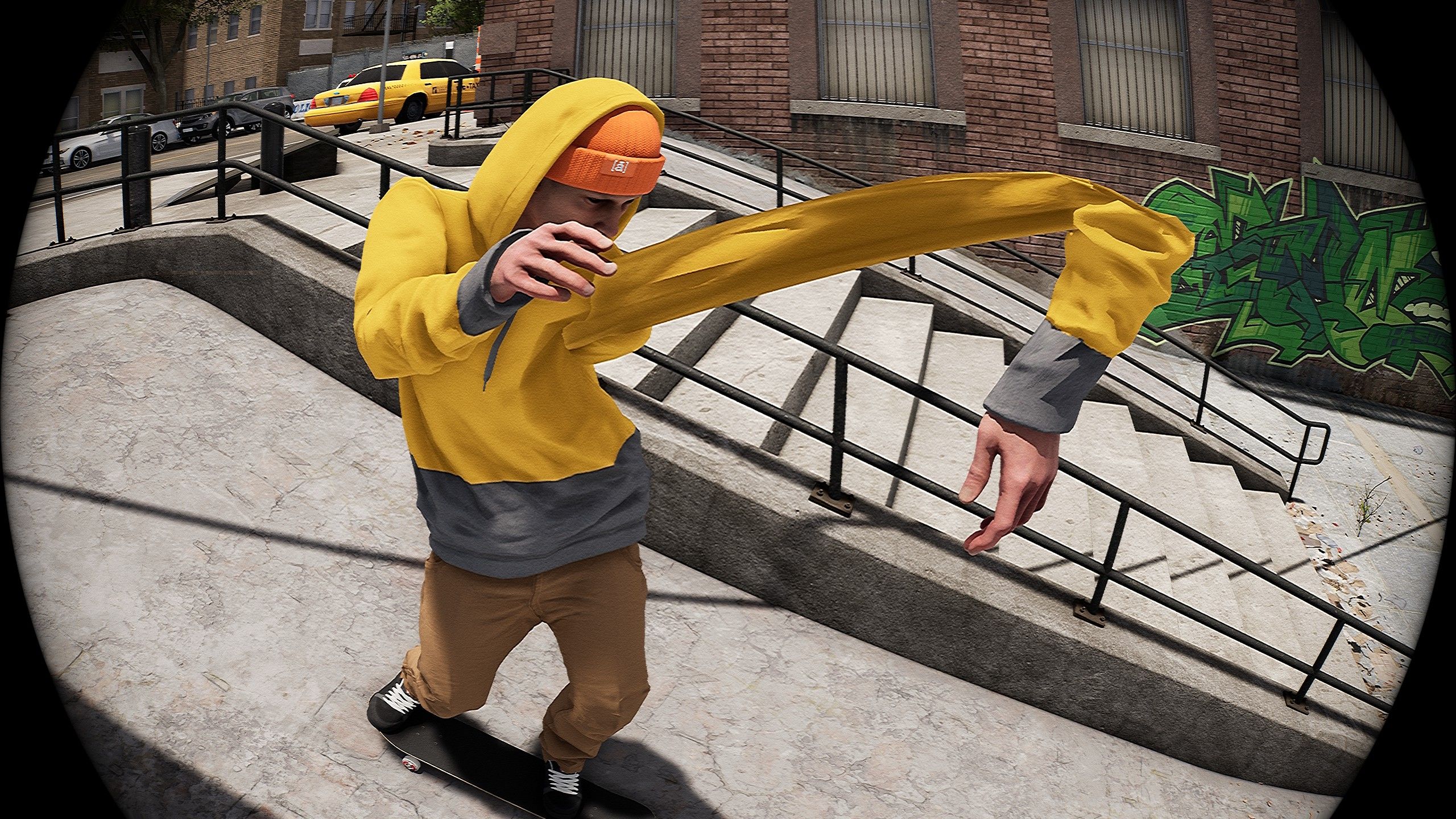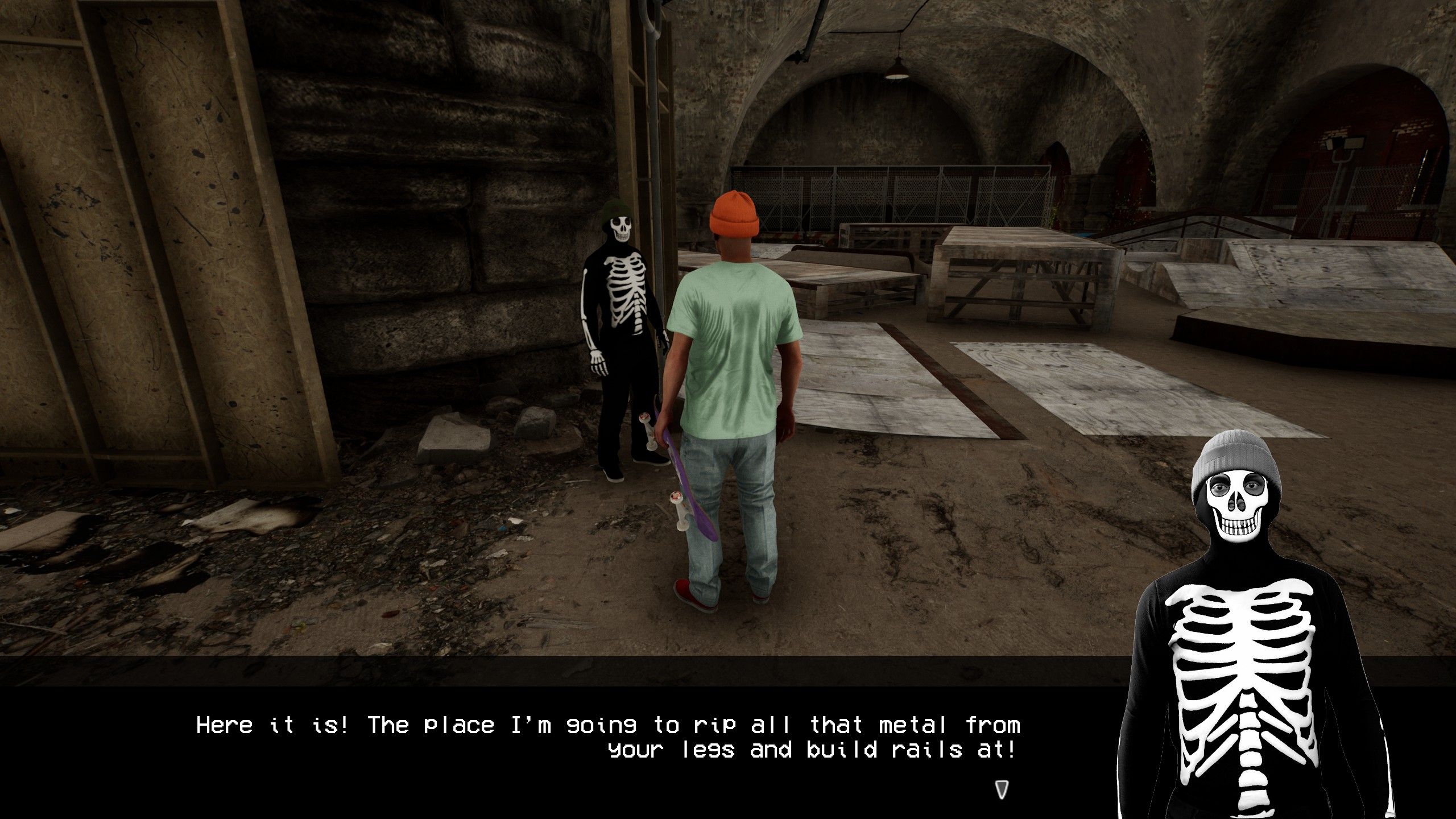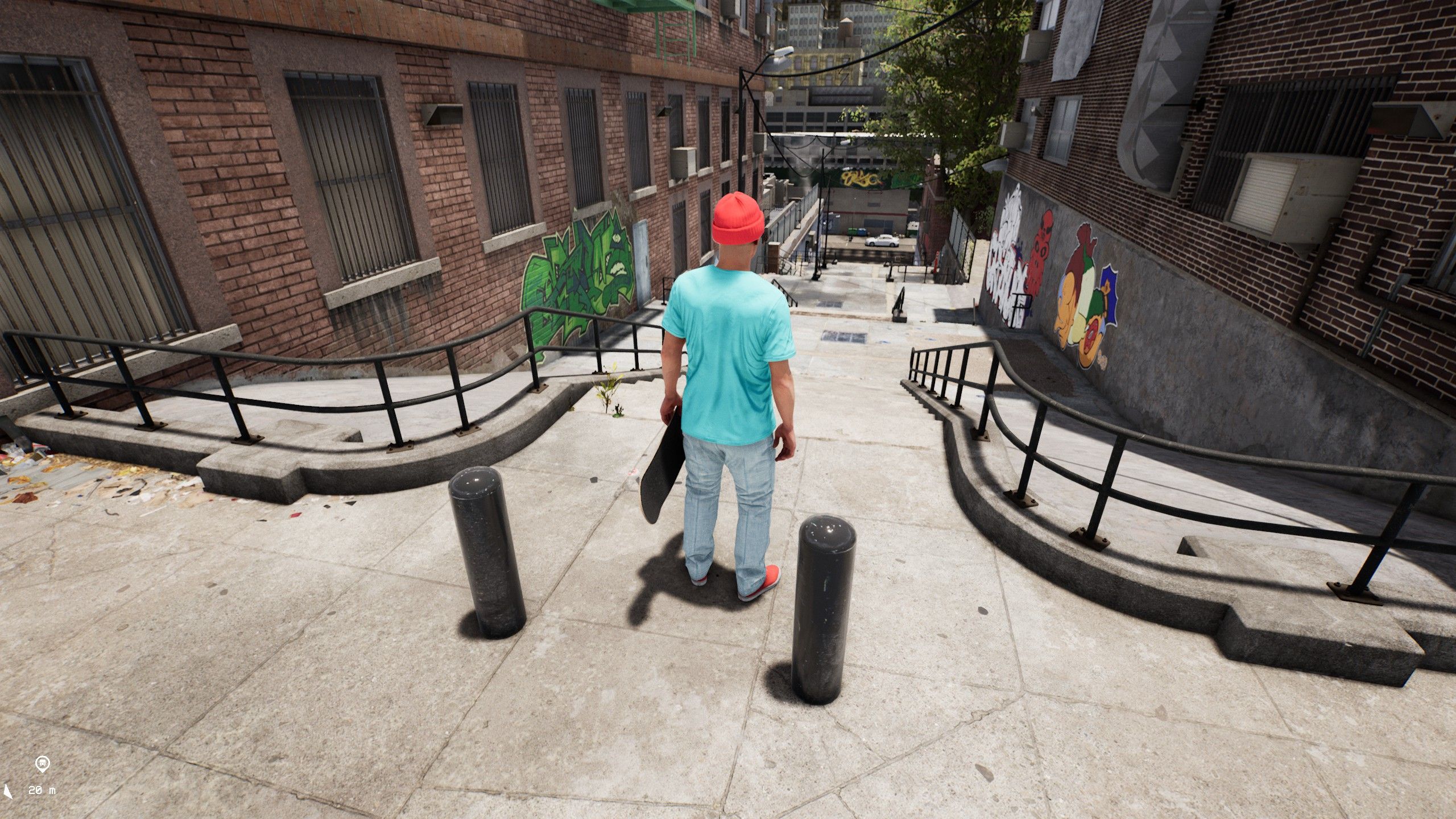The next update will add two new areas, which I got to try out recently, and some new pro skater faces. If you can ignore the frequent wacky physics hiccups and the rigid, nonplussed reaction your character has when they should, by all rights, be landing flat on their face, you’ll find a surprisingly chill skating game. It’s less about hoarding points with as many tricks as possible and more about pushing languidly around a city as viewed through a seasoned kickflipper’s fisheye goggles. Wait, hang on. Do you hear that? It’s the early access siren, and it’s blaring the word “not finished” over and over again in a shrill tone. Session is very much a game where the scaffolding still shows. If anything, it somehow feels more broken now than it did at release, likely a result of that physics overhaul. Legs twist and roll through themselves with the momentum of a non-euclidean gymnast. The board freaks out and flies off into the bushes like a frightened weasel. The replay camera gets caught in level geometry and suffers a debilitating seizure. You’ll encounter all these in the first hour and they never really let up. So fair warning. Okay, somebody please turn the siren off now. Thanks. It also stands by the complex simulator approach that Steve didn’t like when he wrote our Session early access review. Short version: Tony Hawk this ain’t. It ain’t even Skate, the stick-flippy favourite of video game skatefolk since 2007. Here, each controller thumbstick controls a leg. Which means if you switch stance, everything you’d normally do is now reversed. Imagine if your Call of Duty protagonist got his trigger hand blown off and the game swapped your aiming stick and movement stick because he had to use his non-dominant hand until his good arm grew back. (Actually, that sounds great. Raven Software, you can have that one for free.) Anyway, Session! I like it. There’s a pat-your-head-rub-your-belly sensation to this thumb devilry. It takes time to learn. Coming back to it for the first time in over a year was as confusing as coming back to an old Crusader Kings save file. It took a few hours of dark language and irked adjusting of options before I found the fun again. There’s still an easier version of its controls (for example, the left stick will always control your back foot, even when you change stance) but I took the opportunity offered by updated (though still unpolished) tutorials to learn the game “properly”. As for the new stuff, this latest update will add two new spots. Jerome Avenue Banks is a set of steps with steep banks at either side, found in the Bronx, New York, and responsible for its fair share of skateboard lunacy. I foolishly tried to recreate this manoeuvre, thinking that simple ollies would make things easier (I gave up after roughly 50 attempts, but not before I glitched off one rail like an over-caffeinated jack-in-the-box). Less gnarly are the smooth undulating curves of Highline Bridge, a leafy promenade built into one of New York City’s disused train viaducts. In-game, it’s a long, smooth line of easy going rails and sloping walkways punctuated with greenery, watched over by gulls hanging in the sky. A fistful of other locations have been added since release, including indoor and outdoor skateparks, but Highline is a strong example of an environment designed to be approached as one slick line, starting at one end and leisurely hardflipping your way to the other. When you manage it without borked jumps (or unwanted bugs), it gives a taste of what Session might be one day - a sleek sim that makes a single line of demanding tricks look effortless, the video game equivalent of a jazzy Miles Silvas video. It’s just, right now, it’s not that. In the same way that a precious skater pro might not show you the 30 falls before landing a blurring flip you could not even name, Session’s trailers won’t be showing you the wobbling legs, clipping boards, and clunkerrific anti-bails where you warp off your board and stand around looking dopey on some invisible surface. It’s reassuring to have bits and pieces still arriving, of course. A career mode is set up to give you some structure and set challenges in a city that is otherwise an open playground, and a true scenester might smile to find more playable skaters show up in this week’s update (Manny Santiago, Mark Appleyard, Billy Marks and Antiferg, in case you are the scenester in question). But I can’t help yet feel there’s somehow more clunkiness to the movement and animation than there was two years ago. I might be in a minority when it comes to preferring the hyper-sensitive bailing, but it was at least funny. There’s a smoothness to the flow of skaters in the promotional material for Session that doesn’t translate to the real experience of playing today’s version. You might pull off the silkiest, most excellent set of flips and manuals. But you might also dork out on some invisible obstacle, be propelled 15 metres into the air (see below), land on your neck and watch as your ankles swirl in anatomically impossible circles. It’s not just bugs. To get incredibly specific for a moment, one thing that has bothered me since release is the way reverts work. Since the thumbsticks are reserved for footwork, steering is done with the triggers. No problem there. But to revert you have to double-tap a trigger. This means if you’re trying to make slight adjustments to the angle you’re cruising in, ideally by feathering the trigger, you’ll often revert unintentionally. You can change the sensitivity on th revert command, but the sensible solution would have been to devote the bumper buttons to reverts, considering how much you need to do it. No such luck. There’s a whole bumper button dedicated to the lesser-used object mode, which lets you place down bars and kicker ramps anywhere in the level. (A cool feature!) But I use reverts so much more than this mode, and having a dedicated button for it would make things so much easier. In the meantime, I’ve turned reverts off completely and accepted that I’ll just pull an adorable little 180 hop when I want to change stances. In truth, it’s a surprise there isn’t another option for reverts, because in every other respect, Session has a bounty of options. It’s one of the game’s big strengths. Many of them weren’t there at release. You can tweak the gravity, push speed, the rate at which your body rotates in the air. You can tighten each truck independently. You can turn on wheel bite (the terrifying squeak and slowdown that occurs when your deck leans so far it touches the spinning wheels beneath). You can increase the friction of a powerslide, or the height of your most basic leaps. You can turn the day-night cycle off (and I did because the street lighting at night is much too dim for my liking). It’s impressive, probably even overwhelming for more casual players. That ever-increasing feast of options is proof that the developers have been doubling down on the simmyness, a decision which will either capture or repel boardskate fans all across the spectrum. For me, I’m happy there’s a game that seeks to carve so close to the sport. Because while I can cruise shakily on flat ground in the real world, and I enjoy sharing soothing night time skate videos as if I knew who Miles Silvas was before YouTube told me, I cannot attempt such flashy manoeuvres without snapping critical parts of my anatomy. Session is still trucking to be skateboarding a la carte, for people with pre-existing technical expertise. Or for people like me, who wear Appleyard shoes and pretend to be that. With that in mind, I’m giving it the benefit of the doubt. A cautiously optimistic “wait and see how it comes out”. It has its core appeal down, and the longer I play, the more I feel I understand the rhythm it demands of you. But like a skater from Brooklyn stuck using the New York bus network to reach a set of famously hospitalising stairs in the Bronx, it still has some way to go. Yes, I did have to use Google Maps to see if that analogy worked. What do you want from me, blood?



